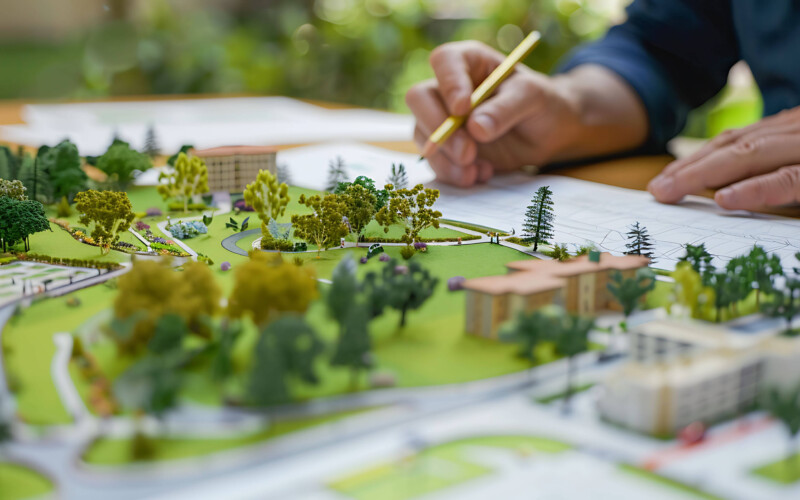
Designing urban landscapes and creating symbiotic architecture on the periphery or in the city centre require thorough planning, experience and expertise in a variety of technical, economic and scientific disciplines. Our last blog post (please link as soon as online “Sustainable urban and regional development – a discipline with a future”) described the full rigour and scope of the training standards we uphold.
Developing a single project is comparable to designing a miniature world that needs to integrate harmoniously into a larger surrounding space. It follows, therefore, that working on and in this microcosm is challenging, especially in view of the current (economic) policies:
“The German construction industry faces significant cost pressure and the need to innovate”, says Rebekka Berbner, Partner in Capital Projects, Infrastructure & Real Estate at PwC Germany. “The effects of sluggish economic development are now following on from the partial collapse of the supply chains and the interest rate shock. The construction industry must accept ownership and make crucial investments in its digital and sustainable transformation.” This applies equally to the AEC sector in Austria. “High prices for building materials, their shortage in some cases and a continuing scarcity of skilled labour – the uncertain global economic situation makes it difficult to agree on accurate economic forecasts for the construction industry in 2025”, says PwC. This does not change the fact that our industry will provide housing that is not just affordable, but can also be built sustainably and operated resource-efficiently – although we must not forget the aspects of profitability for contractors, property developers and investors, of course.
These general conditions do not even alter the growing and changing popular expectations, which make our work even more challenging: The “microcosm” of an urban landscape – a new project – is occasionally subject to completely new requirements on the part of its incoming residents. This means that project developers must also approach these microcosms with a fresh and forward-looking mindset: how multi-generational will a development be, what about family friendliness, is there green space, what flexible living and working space is on offer, and what about public transport links, mobility and local amenities? Are there old buildings that would be suitable for “adaptive reuse” (https:/
All of these and others points were part of our specifications for planning and implementing My Smart City Graz: It is intended to revitalise the former industrial area north of the main railway station. An area of 8.2 hectares will become home to attractive residential, office and commercial space as well as high-quality public spaces with a high proportion of green areas and parks. Creation of this new quarter adheres to a smart overall concept that combines sustainable technologies, flexible mobility solutions and renewable energies with ideas to encourage communal life.
Being involved in the creation of these new microcosms comes with plenty of responsibility. When these new urban landscapes start to come to life, fill up and function harmoniously, it is a wonderful confirmation of our daily work and huge motivation for further new, challenging projects.
Further reading:
https:/